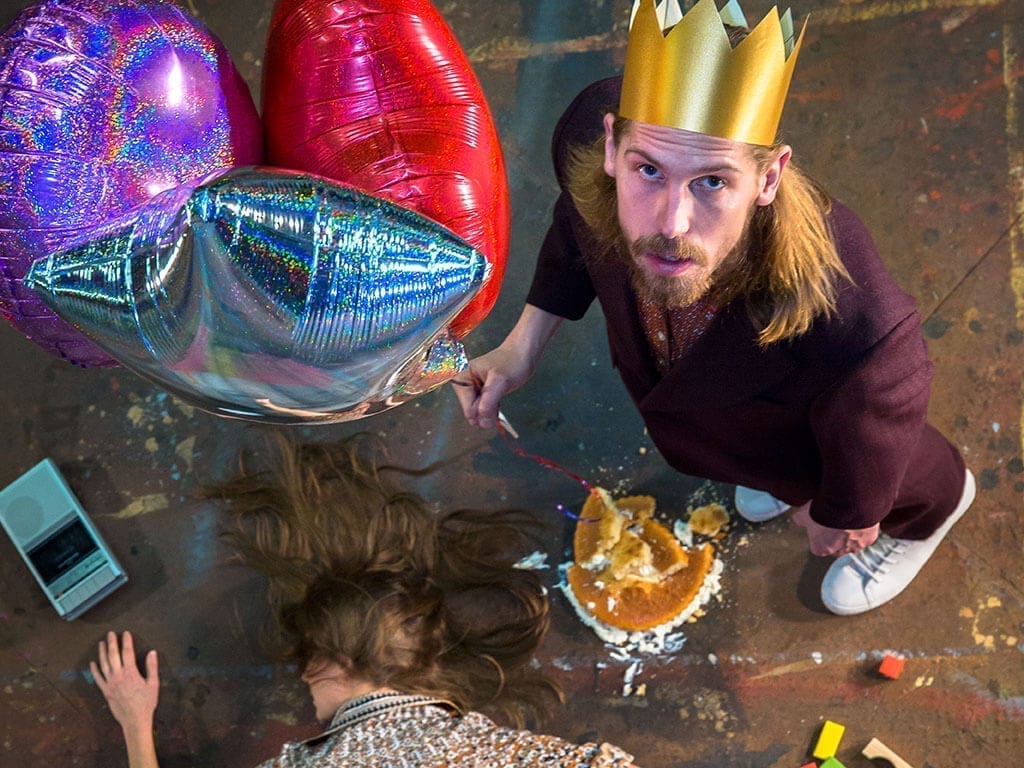Why is it easier to imagine the end of the world than it is to imagine the world changing for the better? Plan B for Utopia opens with this question, which becomes the driving force of the performance. I call it a performance because it can’t simply be categorised as dance or drama; although the show incorporates both, it definitely isn’t a piece of musical theatre.
When someone calls the performance Brechtian in the Q & A, director Joan Clevillé disagrees. He says he wanted to create something new: new style, new genre, a new language to express his questions, to articulate his fears and hopes for the future. Plan B does just this, and is as timely as when it premiered at Edinburgh Fringe Festival in 2015.
It might best be described as a series of sketches. Solène Weinachter and John Kendall play with coloured building blocks, then she tells the fable of an old man lost in the woods. Kendall’s birthday party starts out as a depressing encounter with a cake, complete with a single candle. Soon both characters are standing in a cardboard box with a stuffed toy dinosaur, doing wild animal impersonations. The choreography oscillates between zany and melancholy, each dancer coaxing the other from dejection back to a place of hope.
The show is playfully nostalgic. The couple ask each other what they wish for, and dance to ‘When You Wish Upon a Star’, from Disney’s Pinocchio. In one lovely sketch Kendall lip-synchs to Judy Garland singing ‘Somewhere Over the Rainbow’, while Weinachter controls his arms like a puppet, using coat hangers. She is charismatic and energetic, the perfect balance to Kendall’s understated character.
The closing scene is the most powerful of all, and encapsulates the essence of the whole performance. Weinachter and Kendall build a small house out of building blocks and pass it back and forth from one person’s mouth to the other, in an intricate dance. Finally, balancing the trembling house between a forefinger each, they lower it onto another building block on the floor. No one in the audience breathes for the entire scene. We’re all willing the blocks not to fall, for them to make it. This time, they do. But, Clevillé says, as often as not they don’t, and that’s what makes this piece so moving.

